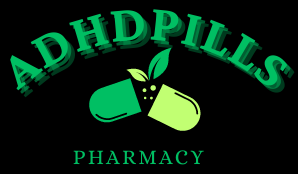Introduction
Attention-Deficit/Hyperactivity Disorder (ADHD) is a neurodevelopmental disorder that affects both children and adults. It is characterized by symptoms such as inattention, hyperactivity, and impulsivity. While ADHD is a well-recognized condition, its underlying neurobiological mechanisms and classification have been the subject of ongoing research and debate. One perspective suggests that ADHD can be considered a disinhibitory disorder, wherein impaired inhibitory control plays a central role in the manifestation of its symptoms. This article explores the concept of ADHD as a disinhibitory disorder, examining relevant evidence and discussing the implications of such a classification.
1. Understanding disinhibition
Disinhibition is a psychological term that refers to a reduced ability to inhibit or control impulses, emotions, or behaviors. Inhibitory control is a crucial cognitive function that allows individuals to regulate their actions and thoughts. It allows them to suppress inappropriate responses, and focus on relevant tasks. It involves the prefrontal cortex and neural networks responsible for executive functions, including working memory, cognitive flexibility, and self-control.
2. The Role of Inhibitory Control in ADHD
Research into the neurobiological basis of ADHD has consistently highlighted deficits in inhibitory control as a prominent feature of the disorder. Individuals with ADHD often struggle to inhibit impulsive behaviors and have difficulty sustaining attention on tasks that do not provide immediate rewards or stimuli. This lack of inhibitory control can manifest itself in various aspects of their lives, including the academic, social, and occupational domains.
3. Neural Correlates of ADHD Disinhibition
Functional neuroimaging studies have provided valuable insights into disinhibition neural correlates in ADHD. Reduced activity in the prefrontal cortex and its connections to subcortical regions, such as the basal ganglia, has been observed in ADHD patients. The prefrontal cortex is instrumental in executive functions, including inhibitory control, and its dysfunction can contribute to ADHD disinhibition.
4. Dopamine and Disinhibition
Dopamine, a neurotransmitter implicated in reward processing and motivation, has also been linked to disinhibition in ADHD. Studies have suggested that dysregulation of dopamine pathways in the brain may play a role in diminished inhibitory control in ADHD patients. Alterations in dopamine receptor function and dopamine transporter activity have been associated with ADHD symptoms, further supporting the disinhibition hypothesis.
5. Impulsivity as a Core Feature of Disinhibition
Impulsivity is a hallmark symptom of ADHD and is closely related to disinhibition. Impulsive behaviors, such as acting without thinking, interrupting others, or making hasty decisions, can significantly impact an individual’s daily functioning. The inability to control these impulses is believed to arise from deficits in inhibitory processes, strengthening the case for ADHD as a disinhibitory disorder.
6. Challenges and Controversies
While the disinhibition model provides a compelling framework for understanding ADHD, it is essential to acknowledge the complexity of the disorder. It is also essential to acknowledge the potential role of other factors. Some critics argue that ADHD is a heterogeneous condition, and not all ADHD patients display significant disinhibition. Moreover, comorbid conditions, such as anxiety or oppositional defiant disorder, can influence symptom presentation and complicate the picture.
7. Implications for Treatment
Viewing ADHD as a disinhibitory disorder has practical implications for treatment strategies. Interventions aimed at improving inhibitory control, such as cognitive-behavioural therapy and certain medications, may help manage ADHD symptoms. Additionally, promoting healthy lifestyle habits, including regular exercise and a balanced diet, positively influences executive functions. This may reduce ADHD disinhibition.
Conclusion
ADHD is a complex neurodevelopmental disorder with a multifaceted symptoms. While the disinhibition model provides valuable insights into its underlying mechanisms, further research is necessary to fully understand the interplay of various factors contributing to the disorder. Recognizing inhibitory control deficits as a central aspect of ADHD may lead to more targeted and effective interventions. This may improve the lives of those affected by this condition. However, it is crucial to consider ADHD as a comprehensive disorder and approach its diagnosis and treatment holistically.
(Note: This article is for informational purposes only and should not be considered a substitute for professional medical advice. If you suspect you or someone you know has ADHD or any other medical condition, please consult a qualified healthcare professional for proper evaluation and care.)




